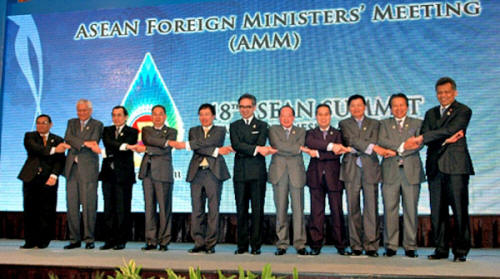|
|
|
Contributing Writer
December 30, 2011
One of the most frustrating issues to haunt the halls of alternative economic analysis is the threat of misrepresentative terminology.
For instance, when the U.S. government decided to back the private Federal Reserve in lowering the interest rates on lending windows to European banks last month, they did not call this a bailout, even though that’s exactly what it was.
They did not call it quantitative easing, or
fiat printing, or a hyperinflationary landmine; rarely does bureaucracy ever
apply honest terminology to their subversive activities. False terminology
is the bane of every honest analyst, because in order for them to educate
and awaken those who are unaware of the truth, they must first battle
through the daunting muck of the general public’s horrifically improper
perceptions and vocabulary.
What some economists see as total collapse is actually a new and decidedly prophetic (or engineered) transition.
What some naively see as the “natural” progression of globalism, is actually a distinctly deliberate program of centralization meant to further the goals of world economic and political totalitarianism.
Asia, and most especially China, is a Petri dish for elitist psychopaths.
What we see as suffocating collectivism in this
region of the world today is the exact social schematic intended for the
West tomorrow. Call it whatever you will, but on the other side of the
Pacific, like the eerie smile of a sinister clown, sits fabricated fate.
The question one must ask, then, is whether sovereign economies are currently tied together in the same way? The answer is no, not anymore.
Certain countries have moved to insulate
themselves from the domino effect of debt implosion; one of the primary
examples being China.
How they knew is hard to say, but if the available evidence causes you to lean towards collapse as a Hegelian creation (and it should if you are paying any attention), then China’s activity begins to make perfect sense.
If a globalist insider told you that in a few short years the two most powerful financial empires in the world were going to topple like bowling pins under the weight of their own liabilities, what would you do? Probably separate yourself as much as possible from the diseased dynamic and construct your own replacement system.
This is what China has done….
With so much savings at their disposal, why bother to issue bonds at all? Why threaten the traditional export-based economy and the uneven trade advantage that the country had been thriving on for decades? The success of Chinese bonds would mean the internationalization of the Yuan, a floating valuation of the currency, and the loss of the desirable trade deficit with the United States.
Back in 2005, this all would surely seem like a novelty that was going nowhere fast. Of course, today China’s actions suggest an unprecedented push to convert to a consumer hub at the center of a massive trading bloc.
To put it simply:
In 2008, after China announced the use of the Yuan in cross-border trade on a limited basis, I began to write about the possibility that China was preparing to break from the Greenback.
For the past few years my primary focus in terms of finance has been the East as a kind of warning bell for the state of the global economy.
In 2009 and 2010, it became absolutely clear
that China (with the help of global corporate entities) was developing the
skeleton of a new system; a trade network that that had the capacity to
supplant the U.S. and end the dollar’s world reserve status.
Two major announcements in 2011 have solidified
my belief that a complete dump of the dollar by Eastern interests is near…
When China states that an ASEAN central bank is in the works, we need to point out what this really means; the ASEAN trading bloc is about to become the Asian Union. The only missing piece of the puzzle is something that I have been warning about for at least a couple years, ever since my days at Neithercorp (see “Migration Of The Black Swans” as a recent example).
This key catalyst is the inclusion of Japan in ASEAN, something which many said would take five to ten years to unfold.
News released this Christmas speaks otherwise:
China, Japan to Back Direct Trade of Currencies.
It means the end of the dollar as the world
reserve, and probably the end of the dollar as we know it.
There can be absolutely no doubt now that Japan will soon implement the latter solution. The dilemma at this point becomes one of timing.
Now that we are certain that two of the largest economies in the world are about the dump the Greenback, what signals can we watch when preparing for the event?
My belief is that the trigger will come squarely from the U.S. and the Federal Reserve,
Any and all of these issues could very well arise in the course of the next 6-12 months, QE3 being a basic no-brainer.
ASEAN could, certainly, drop the dollar
immediately after their central bank apparatus is put in place, resulting in
a much more volatile trade war atmosphere (also useful for full global
centralization later down the road). The point is, we are truly at a place
in our economic life when ANYTHING is possible.
All the fantastic and terrible consequences many
once considered theory or science fiction, are about to become reality.
In everything, there is a choice….
|


